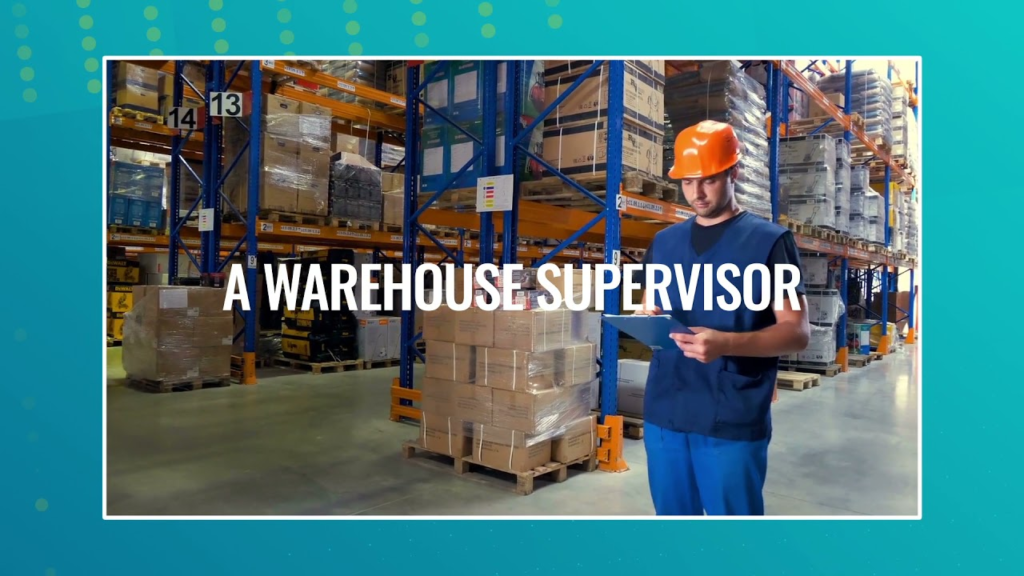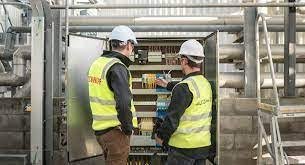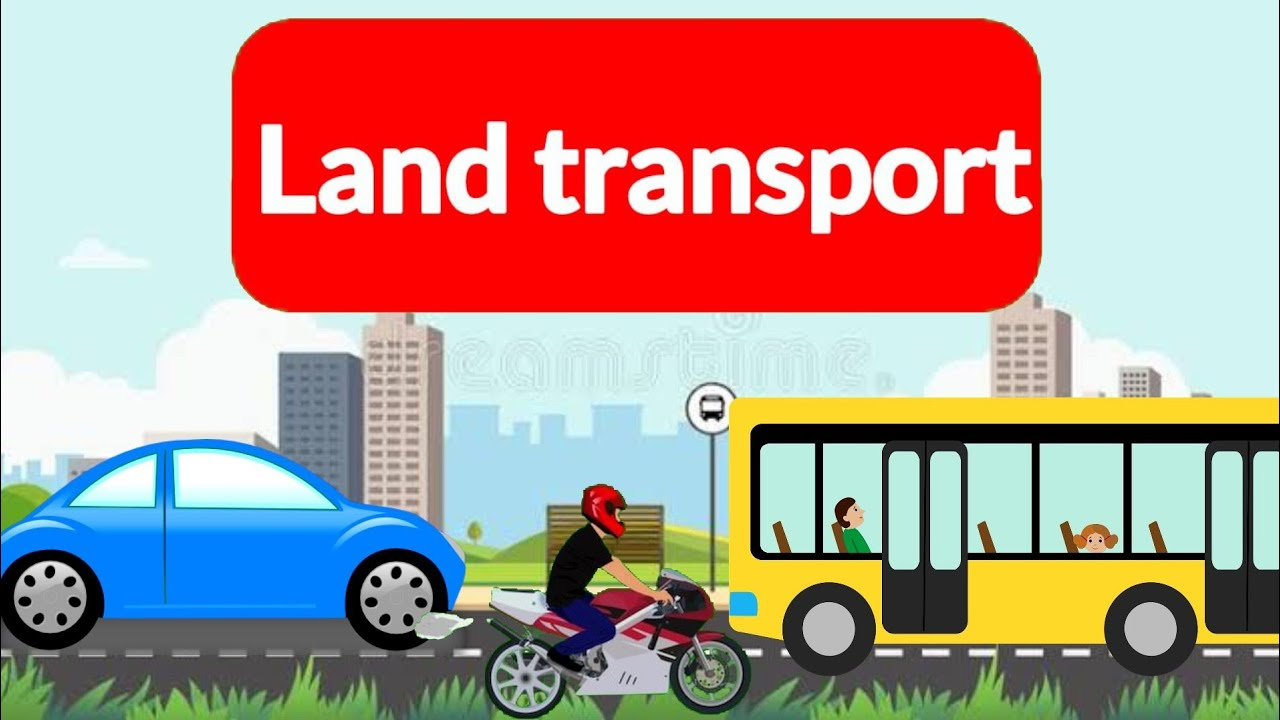Warehouse Supervisor (1 years diploma)
Warehouse Supervisor click here
Brief Job Description: The individual supervises day to day operations at a
warehouse by allocating resources, manging activities and coordinating with
clients and regulatory bodies. S/he is also responsible for measuring and
reporting the effectiveness of warehousing activities and employees’
performance.

Qualifications Pack for Warehouse Supervisor
Elective 1: Bonded Warehouse
The unit is about managing segregation, storage and process in a bonded
warehouse and interaction with customs for clearance of goods
Elective 2: Cold Chain Warehouse
The unit is about supervising cold chain warehouse activities such as segregation,
sorting, grading, storage, quarantine, temperature control and microbiological
control
Elective 3: FMCG Warehouse
The unit is about supervising FMCG warehouse operations for a manufacturer or
distributor or fulfilment centre of an e-commerce company
Elective 4: Automotive Warehouse
The unit is about supervising an automotive warehouse operation including
storage, palletization, compliance to JIT, Kanban and similar auto sector practices
Elective 5: Dry Bulk Cargo Warehouse
The unit is about supervising dry bulk warehouse operations including quantity
measurements, usage of MHE such as GSU and conveyors, pest control

Options
Option 1: Business Development
The unit is about developing relations with key accounts and developing new
business with existing and new customers
Option 2: Profit Management
The unit is about preparation of budget, plan and analyze profitability and
business performance trends
Personal Attributes: The job holder should be physically and medically fit to
undertake a warehouse operation which includes long standing hours and
occasional material movement. S/he should be observant, diligent, have good
mathematical ability. S/he should have good team management skills and should
communicate effectively in English and vernacular language.
Job Role Warehouse Supervisor
Role Description
The individual supervises day to day operations at a warehouse
by allocating resources, manging activities and coordinating
with clients and regulatory bodies. S/he is also responsible for
measuring and reporting the effectiveness of warehousing
activities and employees’ performance.
Description
Core Skills/Generic
Skills
Core Skills or Generic Skills are a group of skills that are key to learning and
working in today’s world. These skills are typically needed in any work
environment. In the context of the NOS, these include communication related
skills that are applicable to most job roles.
Function
Function is an activity necessary for achieving the key purpose of the sector,
occupation, or area of work, which can be carried out by a person or a group
of persons. Functions are identified through functional analysis and form the
basis of NOS.
Job role Job role defines a unique set of functions that together form a unique
employment opportunity in an organization.

Knowledge and Understanding
Knowledge and understanding are statements which together specify the
technical, generic, professional and organizational specific knowledge that an
individual need in order to perform to the required standard.
National Occupational
Standards (NOS) NOS are Occupational Standards which apply uniquely in the Indian context
Occupation Occupation is a set of job roles, which perform similar/related set of functions
in an industry.
Organisational Context
Organisational Context includes the way the organization is structured and
how it operates, including the extent of operative knowledge managers have
of their relevant areas of responsibility.
Performance Criteria Performance Criteria are statements that together specify the standard of
performance required when carrying out a task.
Qualifications
Pack(QP)
Qualifications Pack comprises the set of NOS, together with the educational,
training and other criteria required to perform a job role. A Qualifications
Pack is assigned a unique qualification pack code.
Qualifications Pack
Code
Qualifications Pack Code is a unique reference code that identifies a
qualifications pack.
Electives
Electives are NOS/set of NOS that are identified by the sector as contributive
to specialization in a job role. There may be multiple electives within a QP for
each specialized job role. Trainees must select at least one elective for the
successful completion of a QP with Electives.
Options
Options are NOS/set of NOS that are identified by the sector as additional
skills. There may be multiple options within a QP. It is not mandatory to select
any of the options to complete a QP with Options.
Unit Code Unit code is a unique identifier for an Occupational Standard, which is
denoted by an ‘N
Unit Title Unit title gives a clear overall statement about what the incumbent should be
able to do
Description
Description gives a short summary of the unit content. This would be helpful
to anyone searching on a database to verify that this is the appropriate OS
they are looking for.
Scope
Scope is the set of statements specifying the range of variables that an
individual may have to deal with in carrying out the function which have a
critical impact on the quality of performance required.
Sector
Sector is a conglomeration of different business operations having similar
businesses and interests. It may also be defined as a distinct subset of the
economy whose components share similar characteristics and interests.
Sub-Sector Sub-sector is derived from a further breakdown based on the characteristics
and interests of its components.
Sub-functions Sub-functions are sub-activities essential to fulfil the achieving the objectives
of the function.

Technical Knowledge Technical Knowledge is the specific knowledge needed to accomplish specific
designated responsibilities.
Description
3PL Third Party Logistics
BRC British Retail Consortium
CGST Central Goods and Service Tax
DC Delivery Centre
ERP Enterprise Resource Planning
EXIM Export Import
FC Fulfilment Center
FIFO/ FILO First-in-first out / First-in-last-out
FMEA Failure Mode Evaluation Analysis
FSSAI Food Safety and Standards Authority of India
FSSC Food Safety System Certification
GPS Global Positioning System
GST Goods and Services Tax
HACCP Hazard Analysis and Critical Control Points
HAZMAT Hazardous Material
HR Human Resources
ISO International Organization for Standardization
JIT Just In Time
LIFO Last-in-first-out
MHE Material Handling Equipment
MIS Management Information Systems
NPM Non-Production Material
NSQF National Skills Qualifications Framework
OH&S Occupational Health and Safety
OS Occupational Standards
OSHA Occupational Safety and Health Administration
PGA Participative Government Agencies
PO Purchase Order
PPE Personal Protective Equipment
QP Qualification Pack
RFID Radio-Frequency Identification
SLA Service Level Agreements
SOP Standard Operating Procedures
TAT Turn Around Time
Allocate resources and streamline operations at warehouse
Description This unit is about allocating resources and streamlining operations in a warehouse for
daily operations
Scope This unit/task covers the following:
• Prepare daily plan and allocate resources
• Monitor daily operations
• Resolve escalated issues
• Upkeep of warehouse infrastructure

Range: Stationery, Radio-Frequency Identification (RFID) scanner, bar code scanner,
plastic bags, markers, Personal Protective Equipment (PPEs), Enterprise Resource
Planning (ERP), computer, printers, Global Positioning System (GPS) tracker, Material
Handling Equipment (MHEs), etc.
Performance Criteria(PC) w.r.t. the scope
Element Performance Criteria
Prepare daily work
plan and allocate
resources
To be competent, the user/ individual must be able to:
PC1. obtain receipt, storage and dispatch details
PC2. develop daily work plan factoring in priority cases, and cases requiring
exceptional handling
PC3. get the work plan approved from the manager and allocate tasks to workers
and associates
PC4. generate run-sheets for different tasks and distribute to workers and
associates
PC5. budget and allocate the requisite MHE for tasks at hand
Monitor daily
operations
To be competent, the user/individual on the job must be able to:
PC6. inspect warehouse operational area for compliance to safety, security and
cleanliness norms
PC7. review and monitor the work of the assistants, executives and contractual
workforce, and check for accuracy of documentation and task performance
PC8. engage resources in alternate operation when there is a delay of planned
operations
PC9. allocate additional and ad-hoc manpower and equipment during exigency
PC10. act as a liaison between different warehousing activities to ensure continuity
of operations
PC11. escalate issues regarding MHE operations, transporter delays, accidents,
damages, etc. to manager
PC12. provide corrective and preventive action plans based on accident and damage
reports
PC13. check for correct segregation of items
PC14. check for contamination or leakage of items
PC15. check and facilitate disposal of contaminated or leakage items as per policy
PC16. update tracker of stored inventory
Resolve escalated issues
To be competent, the user/ individual must be able to:
PC17. review escalated issues and identify root cause for providing corrective action
PC18. provide technical guidance to the team for execution
PC19. escalate the issues to manager when external or additional help is required
PC20. coordinate with other departments, contractors, transporters, freight
operators, clients, shipping companies, customs, regulatory bodies and others
to resolve escalations if required
PC21. prepare claims reports for damaged goods and coordinate with insurance
agency and client for processing
Upkeep of warehouse infrastructure
To be competent, the user/individual on the job must be able to:
PC22. ensure all Material Handling Equipment (MHE), storage racks, and PPE are in
working condition
PC23. escalate non-operational equipment and ensue they are corrected by the
maintenance department
PC24. support in planning and executing preventive maintenance
PC25. support manager in planning for new equipment purchase, installation and
commissioning
Knowledge and understanding (K)
A. Organizational
context
(Knowledge of the
company /
organization and
its processes)
The individual on the job needs to know and understand:
KA1. organizational procedures
KA2. different hubs and service stations of the organization
KA3. documentation and reporting as per organization’s mandate
KA4. security procedures to be followed
KA5. escalation matrix for reporting identified problems
KA6. risk and impact of not following defined procedures/work instructions
KA7. coding system followed to label mail
KA8. IT system and ERP system of the organization
B. Technical knowledge
The individual on the job needs to know and understand:
KB1. use of computer and associated data management devices
KB2. basic trouble shooting regarding data management devices
KB3. scheduling and planning of different activities
KB4. different inventory models and type of warehouses
KB5. information from the ERP system
KB6. geographical spread of areas and cities within the geographical reach of the
warehouse
KB7. labels and instructions regarding shipments, MHEs, equipment and work-place
KB8. overall supply chain and warehousing value chain
KB9. types of goods being handled
KB10. special characteristics and handling requirements of shipments, if any
Skills (S)
A. Core skills/
generic skills
Reading skills
The user/individual on the job needs to know how to read:
SA1. written instructions
SA2. invoicing label and shipment labels
SA3. ERP and computer generated reports
Writing skills
The user/individual on the job needs to know how to write:
SA4. work-orders and instructions
SA5. checklist of activities, delays, undelivered items, contacts, etc
SA6. daily reports
Oral communication (listening and speaking skills)
The user/individual on the job needs to know how to:
SA7. communicate with customers and workers
SA8. communicate and collect information from different departments

B. Professional skills Decision making
The user/individual on the job needs to know how to:
SB1. escalate the query and to which department
SB2. resolve a problem quickly internally
SB3. priorities shipments
SB4. Identify and allocate alternate resources in case a job is stuck or becomes a
high priority
Plan and organize
The user/individual on the job needs to know how to:
SB5. plan and estimate the co-ordination required for resolving a querry.
SB6. maintain puntuality
SB7. respond to the client in a timely manner
SB8. prioritize and execute tasks based on client requirements
SB9. make work plans and resource allocation plans
SB10. make checks on execution of work plans
SB11. be a team player and achieve joint goals
Customer centricity
The user/individual on the job needs to know how to:
SB12. adhere to the customer timelines
SB13. address the urgency regarding shipments and activities
Problem solving
The user/individual on the job needs to know how to:
SB14. identify trends/common causes for delays, issue in tracking, etc.
SB15. co-ordinate and handle major issues with different departments
SB16. identify bottlenecks and operational problems and suggest remedial action
Analytical thinking
The user/individual on the job needs to know how to:
SB17. assess the resource requirement for a particular task at hand
SB18. assess and prepare for backup transport in case of continous delays
SB19. plan for shipment movement so that the resources are optimally utilised
Critical thinking
The user/individual on the job needs to know and understand how to:
SB20. resolve issues in a qucik and cost effective manner
SB21. develop work plans factoring in external factors
Unit Title
(Task)
Supervise receiving and dispatch activities
Description This unit is about overseeing loading and unloading activities
Scope This unit/task covers the following:
• Supervise loading and unloading activities
• Supervise receiving operations
• Supervise dispatch operations
• Monitor inventory stored in the warehouse
• Prepare and submit reports
Range: Barcode scanner, packing devices, packing material, markers and stationery,
computer, printer, Management Information Systems (MIS) software, etc.
Performance Criteria(PC) w.r.t. the Scope
Element Performance Criteria
Supervise loading
and unloading
activities
To be competent, the user/individual on the job must be able to:
PC1. inform dispatcher/security guard regarding in-time, out-time and parking bay
allocated for each truck and check if the trucks are docked at their assigned
bays
PC2. assign spaces in the staging area for loader/unloader for loading and
unloading goods
PC3. ensure safety precautions are complied with and the requisite Personal
Protective Equipment (PPE) are used while loading and unloading
PC4. monitor and report productivity and adherence to timelines during loading
and unloading
PC5. inspect manual loading/unloading of goods and record spillages, breakages
etc
PC6. inspect and record damage to goods while handling them using MHE
PC7. constantly monitor ‘shape of the day’ based on work load of different tasks
and re-deploy resources as per demand
PC8. perform visual inspection of inbound and outbound goods
Supervise receiving
operations
To be competent, the user/ individual must be able to:
PC9. check the mandatory documentation on receipt of stock and before unloading
and ensure right quantity is received as per the documentation
PC10. inform executive if there is a difference in quantity received and review
entries made in the system
PC11. inspect safe movement of goods to put-away area and to storage area
PC12. perform visual inspection of goods for and check for damages and barcoding
errors
PC13. quarantine damaged goods and communicate to client the details of damaged
goods and receive action to be taken
PC14. undertake safe disposal of damaged goods and it’s documentation based on
inputs from client and directions from manager
Supervise dispatch operations
To be competent, the user/ individual must be able to:
PC15. allocate storage space in the dispatch area and monitor collection of goods
from store

PC16. check the delivery manifest with the pick list to ensure the correct products
and quantity are being dispatched
PC17. receive stowage plan from transport coordinator and ensure stacking as per
stowage plan
PC18. monitor loading and dispatch of stock in accordance to the run sheet
PC19. inspect safe loading of goods and record any damages
PC20. quarantine damaged goods and act based on inputs from manager and client
PC21. follow-up with vendors and update the status of the dispatch in the system
Monitor inventory stored in the warehouse
To be competent, the user/ individual must be able to:
PC22. ensure goods are stored in the right location and as per the right method such
as in bins, carousels, fixtures, crates, pallets, boxes etc.
PC23. identify any errors made during binning and follow Standard Operating
Procedures (SOP) to rectify it
PC24. perform wall to wall inventory count and generate report
PC25. cross verify inventory report submitted against physical vs system entry
PC26. identify reason for variation between physical and system inventory, rectify
process discrepancies and report the variation to Manager
PC27. ensure availability of inventory as per order requirements
PC28. check if replacement parts are sent to the required functions to fulfil
customer orders
PC29. supervise segregation of damaged goods and act as per SOP and in
consultation with Manager
PC30. ensure inventory status is updated in the ERP concurrently based on
transactions and inventory counts
Prepare and submit reports
To be competent, the user/ individual must be able to:
PC31. update information on stock receipts and despatches
PC32. prepare and submit daily/weekly/monthly reports on receipt and dispatch
performance, pending activities, worker productivity and others as per SOP
PC33. state reasons for non-dispatch, product damage, inventory discrepancies etc
Knowledge and Understanding
Supervise receiving and dispatch activities
A. Organizational
Context
The individual on the job needs to know :
KA1. organizational procedures
KA2. documentation and reporting as per organization’s mandate
KA3. security procedures to be followed
KA4. escalation matrix for reporting identified problems
KA5. IT system and Enterprise Resource Planning (ERP) system of the organization
KA6. procedure for dealing with loss or damage of goods
B. Technical Knowledge
The individual on the job needs to know:
KB1. use of computer and associated equipment
KB2. different material handling equipment and their uses
KB3. use of stationery and equipment like scanners, bar code tagging devices, etc.
KB4. ERP handling
KB5. different types of report such as – incident report, damage report, spillage
reports, labour report, inventory on hand, empty bin report, cycle counts,
items in quarantine, scrap report, inventory ageing etc.
KB6. receipt and dispatch documentation
KB7. MS Office or similar program for analyzing, documenting and presenting data
KB8. inventory counting techniques
KB9. quick fixes for minor issues
KB10. how to read labels instructions
KB11. various escalations regarding resolving and catering to the customer query
KB12. overall process in warehouse operations
Skills (S)
B. Core Skills/
Generic Skills
Reading Skills
The user/individual on the job needs to know how to read:
SA1. written instructions
SA2. product instructions as per the invoicing label and shipment labels
SA3. product tags and labels
SA4. management directions
Writing Skills
The user/individual on the job needs to know how to write:
SA5. damage reports and daily output reports
SA6. end of the day reports
SA7. down notes about accidents, damage to goods
Oral Communication (Listening and Speaking skills)
The user/individual on the job needs to know how to:
SA8. communicate clearly in local language or English with and co-workers
SA9. communicate and collect information from co-workers
Professional Skills Decision Making
The user/individual on the job needs to know how to:
SB1. idenitfy the item as damaged or not
SB2. check if a problem can be resolved quickly internally or needs to be escalated
SB3. identify acitivities or orders that need to be prioritised as per instructions
Plan and Organize
The user/individual on the job needs to know how to:
SB4. plan and estimate the time for each activity.
SB5. maintain puntuality and avoid absenteeism
SB6. translate plans into targets for each activity
Customer Centricity
The user/individual on the job needs to know:
SB7. importance of timelines for activties
Problem Solving
The user/individual on the job needs to know how to:
SB8. identify trends/common causes for delays, issue in picking, packing and kitting
and resolve the same
SB9. identify and correct errors
Analytical Thinking
The user/individual on the job needs to know how to:
SB10. verify the authenticity of the product by looking at the logo, box packaging,
etc.
Critical Thinking
The user/individual on the job needs to know how to:
SB11. suggest methods to improve warehousing activites
Supervise packaging
Description This unit is about supervising packaging and quality check operations in warehouse
Scope This unit/task covers the following:
• Supervise packaging process
Range: MS office, Enterprise Resource Planning (ERP), packaging material, packaging
equipment, labels etc.
Performance Criteria(PC) w.r.t. the Scope
Element Performance Criteria
Supervise packaging
process
To be competent, the user/ individual must be able to:
PC1. check and confirm the client’s packaging and labelling requirement
PC2. ensure all Non-Production Material (NPM) and packaging equipment are
available as per the packaging requirement
PC3. monitor safe unloading of the products from the stacks and movement of
product to packaging
PC4. supervise that items are packed as per instructions, labelled with bar codes
and product tags and sealed as per Standard Operating Procedures (SOP)
PC5. ensure compliance to packaging and labelling requirements as per the
customs requirement of different countries
PC6. verify the product details and labels with products and rectify errors if any
PC7. conduct random check for authenticity of the product by verifying
manufacturing address, the logo of the product, shape, size and specification
of the product
PC8. cross check list of products to be packaged and the products that are being
packed
PC9. inspect binning, crating and palletisation process to ensure safe handling of
goods and adherence to process
PC10. check for goods damaged during packaging and quarantine them separately
PC11. check for optimal utilisation of NPM and man hours without any damage to
the products
PC12. make sure the area is cleaned after packing operations
PC13. ensure that the packed goods are moved to staging/storage/dispatch area
and their corresponding documentation are updated in ERP
PC14. train subordinates on packaging and labelling process for different product,
client, and country requirements
Organizational
Context
(Knowledge of the
company /
organization and
its processes)
The individual on the job needs to know and understand:
KA1. vision, mission and values of the company
KA2. business and performance of the company
KA3. organisation structure of the company to have better understanding of
various departments and skills set present in the company
KA4. knowledge repository and various projects done by the company
KA5. reporting structure to support and expedite project activities
KA6. company’s policy and work instructions on quality standards
KA7. company’s policy on procurement and vendor management
KA8. company’s personnel management and incentives rules
KA9. importance of the individual’s role in the workflow
KA10. occupational health and safety standards
KA11. company’s policy on business ethics and code of conduct
B. Technical Knowledge
The individual on the job needs to know and understand:
KB1. using ERP
KB2. tools for documentation: MS excel and MS Word
KB3. use of spreadsheets to tabulate and analyze the data
KB4. supply chain management
KB5. inventory management process
KB6. types of packing material such as bubble wrap, shrink wrap, corrugated boxes,
thermocol beads, etc.
KB7. packing techniques such as boxing, lashing, etc.
KB8. packaging machines and their usage
KB9. product type and corresponding packing process
KB10. country-wise product-wise packaging and labelling requirement
KB11. fumigation certificate for packaging material
KB12. Just In Time (JIT) mode of inventory management
KB13. First-in-first out (FIFO), First-in-last-out (FILO)
KB14. quality check standards
KB15. packaging standards
Skills (S)
A. Core Skills/
Generic Skills
Reading Skills
The user/ individual on the job needs to know and understand how to:
SA1. read company policy and standard work related documents
SA2. read emails and letters
SA3. read data entries in the system
Writing Skills
The user/ individual on the job needs to know and understand how to:
SA4. prepare reports on quality check and packaging
SA5. write mails
Oral Communication (Listening and Speaking skills)
The user/ individual on the job needs to know and understand how to:
SA6. interact with team members to work efficiently
SA7. communicate effectively with colleagues and vendors to achieve smooth
workflow
SA8. communicate quality standards
SA9. listen to queries patiently and answer them aptly
B. Professional Skills Decision Making
The user/ individual on the job needs to know and understand how to:
SB1. decide on actions to be taken on any issues identified for not following Turn
Around Time (TAT)
SB2. decide on delay in packaging and take appropriate action to avoid delays
Plan and Organize
The user/ individual on the job needs to know and understand how to:
SB3. plan and organise items before packaging and quality check
SB4. plan and organise work schedule to achieve smooth workflow from quality
check to packaging
Customer Centricity
The user/ individual on the job needs to know and understand how to:
SB5. address issues of pilferage and damage
Problem Solving
The user/ individual on the job needs to know and understand how to:
SB6. resolve interpersonal issues among employees by communicating in time, in
order to achieve smooth workflow
SB7. contribute to quality of team work and achieve smooth workflow
SB8. delegate work appropriately
SB9. identify and resolve issues due to technical or human error
Analytical Thinking
The user/ individual on the job needs to know and understand how to:
SB10. analyse reasons of wrong packaging and steps to avoid
Critical Thinking
The user/ individual on the job needs to know and understand how to:
SB11. improve work processes by adopting best practices
SB12. identify and resolve recurring inter-personal or system related issue









